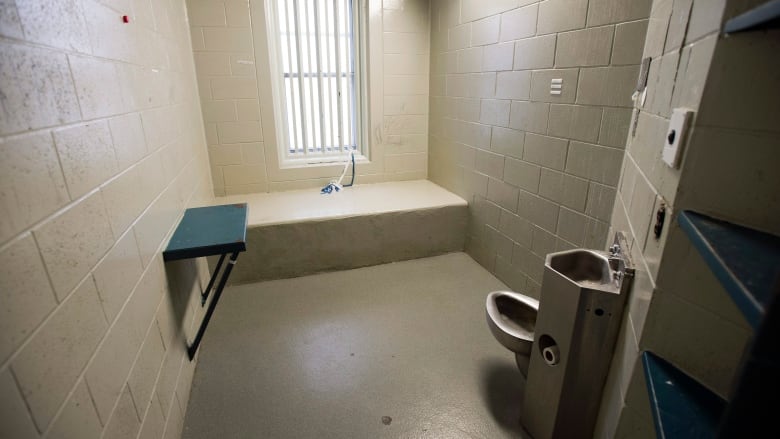As solitary confinement drops, violent attacks rise in Canadian prisons
Correctional investigator calls for more supervision to reverse upswing of assaults behind bars

Stricter limits on solitary confinement in Canadian prisons haveled to an upswing in inmate assaults, according to new data from the federal prison watchdog.
Correctional Investigator Ivan Zinger said a new strategy to limit prolonged segregation has had the"unintended consequences" of more violent attacks behind bars. He's urging the Correctional Service of Canada to strengthen supervision and risk assessments to improve safety forinmates.
"I'm calling on the service to really step up and be vigilant, so that we don't substitute trying to reduce psychological harm and distress of solitary confinement with increased potential for involvement in assaults," he told CBC News.
- Solitary confinement under scrutiny
- 'We're still human beings,' segregated inmate says
- Liberals set 15-day limite for segregation
Zinger's office counted the number of people leaving segregation and how many of them were involved in an assault, either as the instigator or the victim.
An analysis of the numbers found a clear correlation between release back into regular population and violent incidents;releases declined to 4,025 from 5,501from 2012-2017, while the number of those leaving segregation who were implicated in an assault rose to 321 from 244.
Under mounting pressure from human rights groups and prisoner advocates, CSC implemented its desegregation strategy three years ago. Since then, the average number of segregated inmates has dropped to about 300 from about 800 on any given day, while the length of time spent in solitary has decreased to an average of 35 days to about 25 days.
Violent side-effects
Zinger applauded that trend, but said CSC has not done enough to mitigate thepotential side-effects of the rapid emptying of segregation cells.
"It hasn't happened as smoothly as everybody thought," he said. "After crunching the data it's clear to me now that it has had unintended consequences on the safety and security of inmates."
Offenderswith mental health issues are "grossly over-represented" in solitary confinement, and Zinger said better assessment and appropriate placement, including specialized units, arealso key to a securetransition out of segregation.
In June, thefederal government tabled a bill to impose acap of 15 days onholding prisoners in solitary confinement, allowing CSC an 18-month transition period when the cap would be set at 21 days. At the time, Public Safety Minister Ralph Goodalesaid the objective was to keep segregation to an "absolute minimum."
'Tool for a reason'
Jason Godin, national president of the Union of Canadian Correctional Officers, said the rise in assaults is no surprise. and he expects it will get much worse when the bill further limiting segregation passes into law.
He called administrative segregation a "tool for a reason,"to isolate dangerous persons and to protect vulnerable inmates, some of whom ask to be put in isolation. Restrictive policies only transfer the problem of violence, he said.
"We have high-risk female and male offenders who just can not function in an open population," he said.
"At the end of the day, sometimes we have no choice but to put these individuals who are threatening others in segregation. What's the alternative?"
While Zinger did not document any increase in staff assaults related to the desegregation policy, Godinsaid correctional officers are at greater risk due to the new restrictions.
Mitigation measures
Spokesperson Avely Serin said CSC is taking a number of steps to deal with an offender population that is complex and diverse, including inmates with gang affiliations, substance abuse problems and mental health issues.
She said those measures include enhanced intelligence and information systems, population management and mental health strategies and new search and surveillance technology.
"The prevention and control of violence are ongoing concerns for correctional systems worldwide. We continue to work diligently to ensure the safety and security of federal institutions," Serin said in an emailed response to CBC News. "Prison violence is not tolerated. Disciplinary action is taken, and in some cases, criminal charges are laid against offenders involved in violent incidents."












_(720p).jpg)


 OFFICIAL HD MUSIC VIDEO.jpg)
.jpg)



























































































